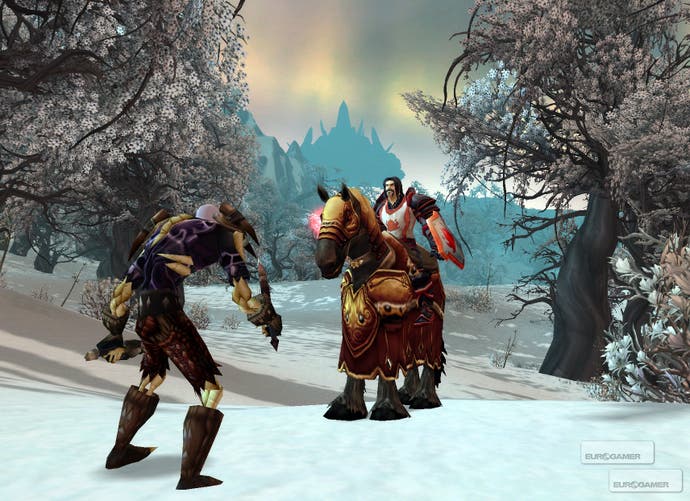Blizzard's Rob Pardo
How the world's most successful studio makes games.
"We very much believe in not making a mammoth design document and then just having a team make that to spec and shipping the game," Pardo confirms. "We try to make sure that we're building the game as we go along and adding to it, so that at every step - be it prototyping a gameplay style or a new unit - we have the opportunity to play it as soon as possible.
"That way we can start iterating on that gameplay before we've invested too much time or energy into the programming or the art, or what have you. Then we just keep on playing it, and keep on polishing it, and keep on playing it, and keep on balancing it - until we get to a point where we feel like it's really reached that Blizzard quality mark."
This is not necessarily a fast process. StarCraft II was built with a new engine, so it took a while to get the game up and running and start iterating on the design - but even at that, Pardo reckons that they had a playable version ready by the end of 2005, or early 2006. The intervening years, then, have been spent fixing, tweaking, polishing and building on the design of that first playable build - not to mention adding single-player into the mix.
Single-player didn't appear until "halfway through the development process", Pardo says. It's not that the team was neglecting the campaign game - they know that many players loved StarCraft for the single-player aspect. (Speaking to the game's lead producer, Chris Sigaty, in a later interview, I get a rough estimate that 50 per cent of the game's players play for the single-player experience.) Rather, it's another Blizzard philosophy in play - build multiplayer first, then build great single-player around it.

"[Building a great multiplayer experience] is the harder thing to do, and it's also the thing that allows you to play the game the fastest," Pardo argues. "If we can just play against each other PvP, we don't need to develop some complex AI system. We can start playing the game right away and seeing if it's fun.
"It's a quicker way to get the game going - and it also goes back to that depth comment. You can make a single-player game that delivers X hours of play, maybe it has replayability, maybe it doesn't - but if you want to deliver a deep, replayable PvP experience, that's a lot harder in my opinion.
"You have to work a lot longer on making sure that..." Pardo pauses for a moment, then launches into an explanation of one of the key challenges of building great multiplayer.
"In a lot of games, you learn the dominant strategy, then everyone knows it and the game loses its replayability," he explains. "So you're trying to make sure that you have a game that doesn't have dominant strategies, and that everything has a counter - and that as you continue to learn and explore the game, you get better at it and you just learn different techniques.

"It gets to that level where, hopefully, the game is as deep and strategic as something like chess, where there isn't a dominant strategy. That takes a lot longer, and to be honest, it's also a lot more fun for the developers to get that going first!"
Blizzard's approach of building multiplayer first and then building the single-player around it flies in the face of how many developers work, especially on console games. If you had a pound for every time you've read the phrase "tacked-on" in relation to multiplayer in a game review in recent years, how many pounds would you have? Some pounds. Definitely some.
Pardo nods in recognition when I mention the idea of tacked-on multiplayer modes. "I think that if you want to have a great multiplayer game and have a great single-player game, you should build the multiplayer first," he replies, "or at least be thinking about it at the same time.
"The challenge a lot of console games have is that they think about the single-player, they build that game, and then they try to tack the multiplayer on at the end - which I don't think is ever going to be very successful.
